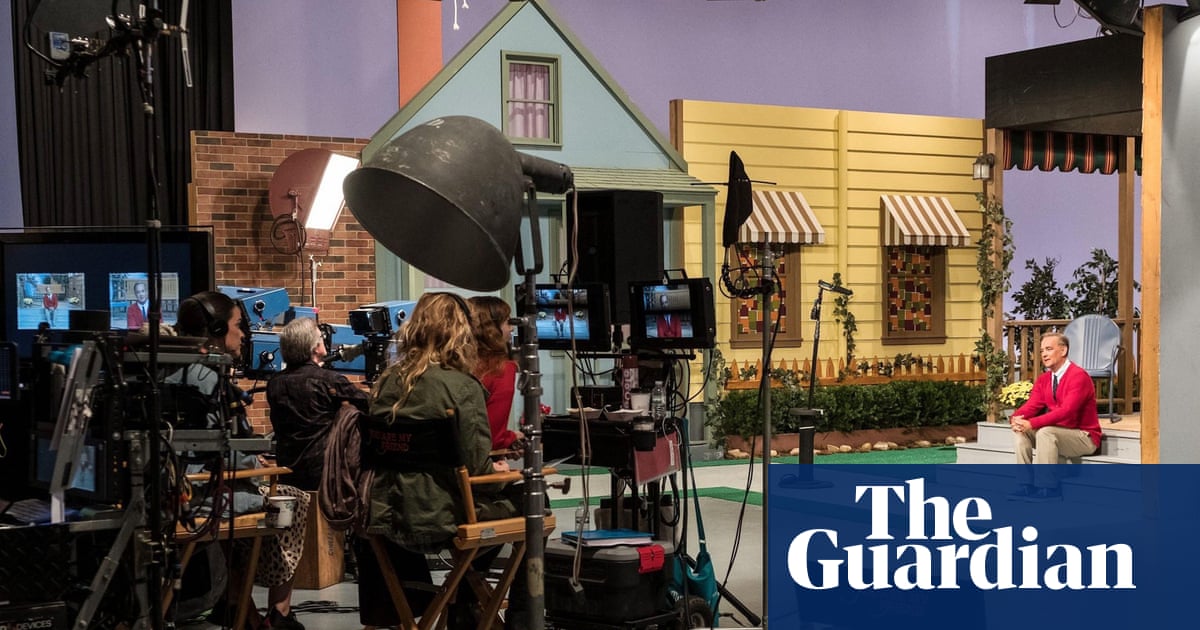
There is probably a good reason why it is hard to compile a list of decent novels about the making of films (I can think of one, Terry Southern’s Blue Movie): nothing much happens. Or as Tom Hanks observes in this ambitious addition to the genre: “making movies is complicated, maddening, highly technical at times”. Reading it is to be reminded that Hanks, one of the greatest of all movie stars, must have had a good deal of time on his hands during lockdown. Part of its motivation appears to be to give a proper flavour of that truism of movie making: that so much of it is waiting around; three days sitting in a trailer for a minute or two of drama that might end up in a digital suite trash can. This novel, if nothing else, gives you a sense of that experience in real time.
Hanks, a famous collector of typewriters, has put them to use once before, in a short story collection that came out in 2017. On that occasion his publisher ventured that “the two-time Oscar winner is as talented a writer as he is an actor”. His screen agent might have had something to say. He writes well enough – there are many artfully constructed scenes here – and what he doesn’t know about the world of this book you’d imagine is not worth knowing; but that quality that he possesses in so much range and depth on screen – the ability to make you care deeply about lives not your own – is quite often elusive on the page.
His story begins with a call to a freelance writer and film buff, Joe Shaw, from a renowned Hollywood film-maker, Bill Johnson, which ends in the former being co-opted to tell the full tale of the latter’s latest movie, a big-budget fantasy called Knightshade: The Lathe of Firefall.
That tale starts, of course, with backstory, that real-life prequel to any two-hour cinema experience. Perhaps informed by his own method as an actor, Hanks takes us back to the human story behind his novel’s screen epic, the visit of a US marine after the second world war to his impressionable young nephew, a budding comic book writer. The marine’s history as a flamethrower at Guadalcanal eventually finds its way, through a series of mythologised expressions, into a comic book that Johnson, seeking inspiration, picks up from a junk shop box.
The thread of the novel is the way that 75-year-old emotion comes to be repackaged for a 21st-century attention-deficit screen audience. There is a promising vein of dramatic irony in that elevator pitch, but along the way Hanks is also determined to give a full account of all the lives devoted to bringing that story to life. Thus: Allicia Mac-Teer, who has swapped her job on the front desk of a hotel to be an assistant producer for Johnson. (Her initial duties involve getting bottled water, some ice cold, some at room temperature, to the talent; and sourcing the most likely venues, in the small-town set location, of Neapolitan rather than thick-crust pizza. She evolves to providing insight into the labour-intensive Ps of the “carnival of cardboard”: prep, principal photography and post-production. We are, for better and worse, beside her all the way.) Likewise, Ynez Gonzalez-Cruz, a cab driver who becomes the fixer who keeps the haphazard progress of the movie – and the novel – just about on track; and a roll call of others.
There sounds in this a leading-man’s-acceptance-speech-acknowledgment that there is no “I” in the teamwork of Hollywood. Still, as drama, the book mostly gathers pace when starrier egos eventually land on set. Hanks has particular fun with Johnson’s male lead, OK Bailey, who introduces himself to his co-star with a text message reading: “Let’s not ***k till we’re done.” OKB’s anarchic presence prompts gossip, no doubt based on Hanks’s insider knowledge of other car-crash behaviour: “BOLDFACE NAME NUMBER ONE, reported to be microdosing heroin in his trailer”… and “BOLDFACE NAME NUMBER TWO who was getting a divorce, banging the gaffer and hitting on [his love interest]”. Those tales are not, however, the substance of this movie or this book. Knightshade never threatens to become Fitzcarraldo.
Write what you know, the famous rule of fiction demands. Hanks does not waver from it. You learn, in sometimes entertaining fashion, plenty of things about how films get made: that the first day of shooting is always Wednesday (so those hired hands who don’t cut it can be fired before the weekend, after three days’ trial). That the props trailer is a kind of Amazon warehouse in miniature. That there are a thousand different kinds of delay. Some of this detail also serves to emphasise, however, that the real magic of films shares something crucial with novels: what you leave out is at least as important as what makes the cut.
The Making of Another Major Motion Picture Masterpiece by Tom Hanks is published by Hutchinson Heinemann (£22). To support the Guardian and Observer order your copy at guardianbookshop.com. Delivery charges may apply












